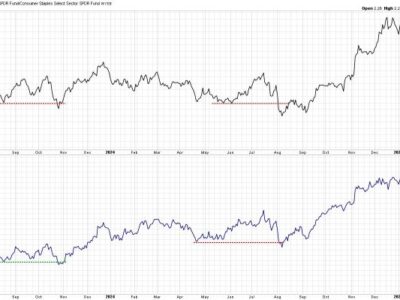
On the heels of Russia’s aggressive war against Ukraine in early 2022, the Biden administration temporarily exempted Ukrainian steel from the Trump administration’s bogus “national security” tariffs imposed under Section 232 of the Trade Expansion Act of 1962 (at the behest of the domestic steel industry). The exemption was set to expire on June 1, 2023, with tariffs snapping back to 25 percent. Last week, the White House announced it would maintain Ukraine’s exemption from tariffs and expanded it to cover Ukrainian steel processed within the European Union (EU). For free traders battered by ill‐advised protectionism over the last two administrations, this announcement is what constitutes good news these days. As my Cato colleague Scott Lincicome rightly noted on Twitter, “… this exemption is a tacit admission that opening our markets to goods/services from allies & other friendly nations is IN THEIR AND OUR OWN SECURITY INTERESTS, but admitting that wouldn’t be very ‘worker‐centric’,” the latter of which has been a central talking point in the Biden administration’s protectionist trade policy. This (very) minor tariff relief is a positive relative to the status quo, but it also serves as a sad reminder of the domestic steel industry’s stranglehold on U.S. trade policy.
To recap, in 2018 despite a memorandum from his own Secretary of Defense who rightly noted that the Defense Department only needed three percent of steel produced domestically, President Trump imposed 25 percent “national security” tariffs on steel (and 10 percent tariffs on aluminum) imported from virtually every country in the world, including longstanding allies. Naturally those tariffs angered such allies and triggered predictable retaliation from trading partners. The tariffs also imposed enormous costs on downstream domestic users—raising prices of a critical input for manufacturers and builders. In 2020, economists Dr. Kadee Russ and Lydia Cox found that the steel and aluminum tariffs cost the U.S. economy about 75,000 manufacturing jobs, not including foreign retaliation. Meanwhile, the Peterson Institute for International Economics estimates that the tariffs cost consumers about $650,000 for each steel job created.
We’ve been down this road before. In 2002, President George W. Bush imposed broad based tariffs on steel under Section 201 of the Trade Act of 1974, which allows the executive branch discretion to impose temporary tariffs to counteract an alleged surge of imports. The Bush tariffs ranged from 10 to 30 percent and applied to over 170 different steel products. A very recent Cato research brief written by Drs. James Lake of the University of Tennessee and Ding Liu of the Analysis Group, which is based on a longer working paper, found that the Bush steel tariffs “had large negative short‐term effects on local steel‐consuming employment but no notable effects on local employment in the steel industry.” Research from the Trade Partnership found that the Bush steel tariffs cost 200,000 jobs in steel‐consuming industries at a time when only about 187,000 people worked in the steel industry and resulted in about $4 billion lost wages between February and November of 2002—the immediate six months following the tariffs’ imposition. Angered allies led by the European Union challenged the tariffs at the World Trade Organization (WTO) on grounds that they were inconsistent with the WTO’s Agreement on Safeguards. The U.S. eventually lost the case at the WTO and quietly withdrew the tariffs but not before substantial damage was done.
Those are just the discretionary tariffs politicians in the United States have imposed in recent decades to protect the domestic steel industry. The rot is much deeper. Indeed, the United States aggressively uses anti‐dumping (duties designed to counteract the alleged scourge of a foreign producer selling below cost) and countervailing duties (designed to counteract foreign government subsidies) (AD/CVD)—so-called “trade remedies”—under the Trade Act of 1930 (infamously known as Smoot‐Hawley) to protect the domestic steel industry. Cato scholars have long criticized the sordid history and application of AD/CVD laws in the United States—see here, here, here, here, here, and here. Unlike the Section 232 and 201 tariffs imposed by the Trump and Bush administrations respectively, AD/CVD duties are imposed through a complicated quasi‐judicial process involving the U.S. International Trade Commission and the Department of Commerce after a petition is filed by a domestic firm or industry group. Irrespective of the process by which they are imposed, these duties can reach astronomical levels—324 percent on steel nails from Kosteel Vina, a Vietnamese steel producer, for example. Today, there are nearly 670 AD/CVD orders on the books in the United States and some form of steel is involved in 305. In other words, nearly half of the U.S. trade remedies are protecting the domestic steel industry. Not only that, there are currently 16 AD/CVD investigations involving steel ongoing according to the International Trade Administration.
Owing to layers of protection, U.S. manufacturers and builders pay more for steel than their competitors in other countries. On May 22, 2023, for example, the benchmark price for a metric ton of hot‐rolled steel in the United States was $1,170 compared to the world export price of $580 for a metric ton of hot‐rolled steel. Given that steel is a vital input in the production of a wide swath of items, U.S. protectionism makes steel‐consuming industries less competitive globally than firms in countries with cheaper access to steel.
Over the years, Washington has provided billions of dollars’ worth of protectionism and subsidies to the domestic steel industry. Despite this largess, the U.S. steel industry continues to shrink while at the same time its high‐powered lobbyists and lawyers beg at the trough for more protectionism. Again, while the White House’s decision to extend Ukraine’s exemption from the steel tariffs is welcome news, the whole ordeal is a sad reminder that much of the domestic steel industry today defines “success” by bending government power in its favor.








